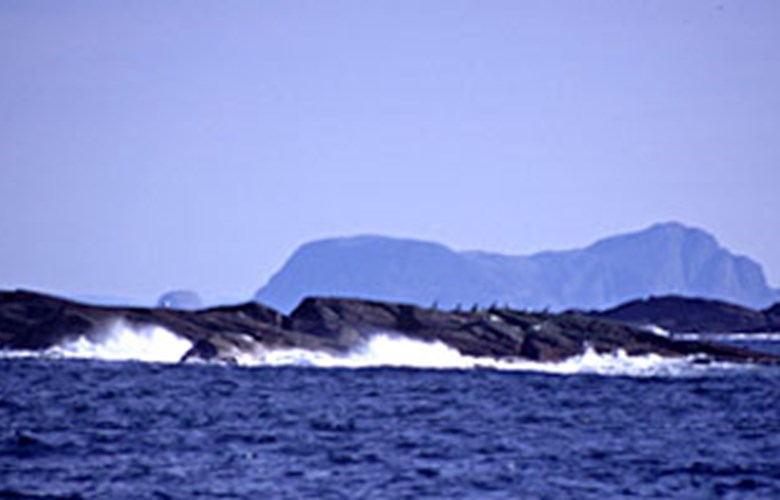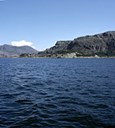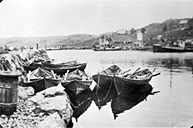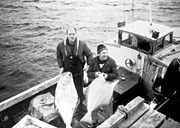Bearings were secret knowledge
Older people liked to tell stories about how they fished using landmarks as bearings. But the position they were in, was never revealed. From time immemorial it was a secret never disclosed. That would be the same as to hand out money.
Along the whole coast there are shallow fishing grounds where there are often great quantities of fish, and Solund is rich in such places. In order to get to the best place, one had to row by getting one¿s bearings: stop at the intersection between two aiming lines toward known cliffs and tops, then behave in such a way that the code was not solved by anybody else.
Long and perilous road to ocean fishing grounds
"When a boat approached, we were off", said the old people. The fishing places could be located a long way from land, the outermost and least secret were called ocean fishing grounds, the ones closer to land simply fishing ground bearings. Vestrehavet (sea) was such an ocean fishing ground. It was located five nautical miles west of Utvær.
People from Hagefjorden regarded rowing to Gåsvær as the longest way, from there and home was next to nothing. The bearings of Vestrehavet was Nordholmane near Ospa, and Kverhelledynja at Fiskholmen. People with local geographical knowledge knew that if weather permitted them to row out there, they needed both clear weather and good visibility to be able to find the right place.
Pertinent names
As far as "méd" further out were concerned, at any rate, each farm had its own. This had to do with distance. And there were places enough for all. People from north Solund, Gåsvær, and Hagefjorden often fished northwards, at Nyeméd. From Strand and southwards they tended to fish at fishing grounds such as Ambaren and Blåkolla. People from the west of Solund usually went to Synstegrunnen, Vestrehavet, Nordgrunnen, and Gildeberget.
The "méd" could have pertinent names, some gave associations to the place to fish, others to the people who fished there. When a "méd" had been tried, people stayed there and examined it more.
"Augarsméda" almost holy
The fishing grounds for cod and coalfish nearer land were especially closely defended. The so-called "Augarsméda" was the greatest secret. Here they had to rest on the oars, allowing only a deviation of a boat¿s length. If a "augarsméd" was disclosed, it was regarded as a dead loss.
Even if it was not good form, some asked briskly for new "méd". From Utvær there is the story of the farmhand disclosing a good "méd" while the fisherman himself was in town. The bottle was needed to get the farmhand talking. The "méd" bore the name of the "liquor méd" ever after. An old fisherman said that he would rather lose his cow than give away the "méd" at the "augarsegga".
Satellites replaced "méd"
Fishing with line and longline replaced the knowledge of "méd". Herring and flying squid were used as bait, as well as crab which they wound in wool thread. The fishermen from Sulen preferred "nordfjordbåt" (large rowboat) on the sea, "seksæringar" (rowboat with three pairs of oars), and on shorter trips in good weather perhaps "færing" (small rowboat). The sail was always on board. They cleaned the catch when they came on shore, washed and salted it for sale in town or in the Sogn district. The spells of work were often longer than 24 hours.
The modern fishing boats are probably fishing at the same places today. But electronic instruments take the boat to the exact position and indicate if there is any fish. The once all-important knowledge of "méd" has become redundant and will disappear with the old people.




